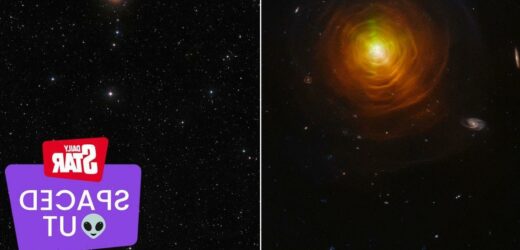A dying star looks like a “portal to the underworld” in this creepy photo captured by NASA’s Hubble Space Telescope.
The aging red giant, known as CW Leonis, has an eerie glow that beams out across space.
It is the closest carbon star to Earth – but is still a whopping 400 light-years away.
“This photo of the aging red giant star CW Leonis seems like something out of a Halloween tale,” a NASA statement read.
“The star looks like it's entrapped inside wispy orange spider webs that wrap around it.
“Beams of light shine through the dust, like sunbeams on a partly cloudy day.”
The space organisation said that despite looking like a “hypnotising vortex” or a “peek into a witch’s cauldron” the creepy illusion is actually caused by the star running out of fuel.
Boffins analysing the space object say it is burping shells of sooty carbon into space as a by-product of nuclear fusion.
As CW Leonis is nearing the end of its lifespan, it has stopped fusing hydrogen in the core and has started fusing it on its outer layers.
This stage of the red giant’s journey gives it a “second lease” and causes the odd glow seen in the photo.
“The bright beams of light radiating outwards from CW Leonis are one of the star's most intriguing features,” NASA added.
“They've changed in brightness within a 15-year period — an incredibly short timespan in astronomical terms.
Stay in the loop with all the Daily Star's craziest stories by signing up to one of our newsletters here.
“Astronomers speculate that gaps in the dust shrouding CW Leonis may allow beams of starlight to pierce through and illuminate dust, like searchlight beacons through a cloudy sky.”
It’s not the first time NASA has released an odd picture – this week, a snap detailing the colourful beauty of the nebula in deep space caused a stir when an eagle-eyed fan spotted Godzilla.
The incredible detail of the nebula, which is a huge cloud of dust and gas, was overshadowed by the iconic Japanese monster in the constellation of Sagittarius, which is along the plane of the Milky Way.
Source: Read Full Article




